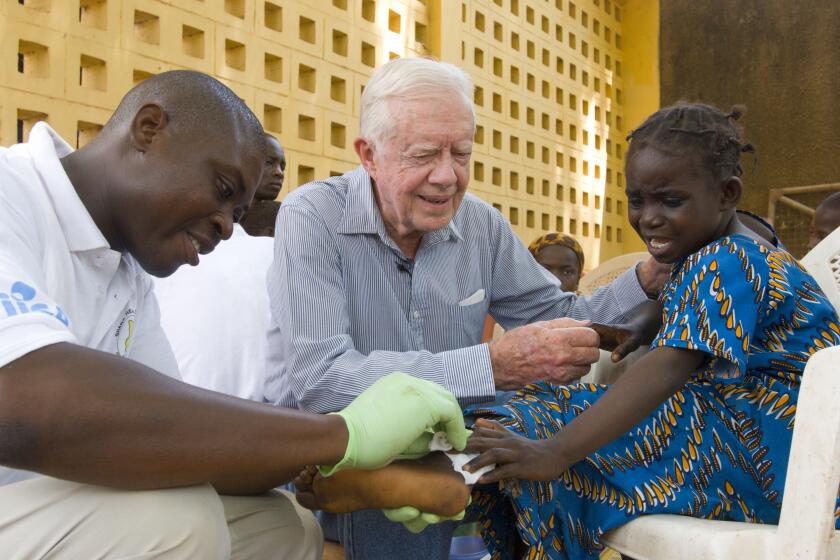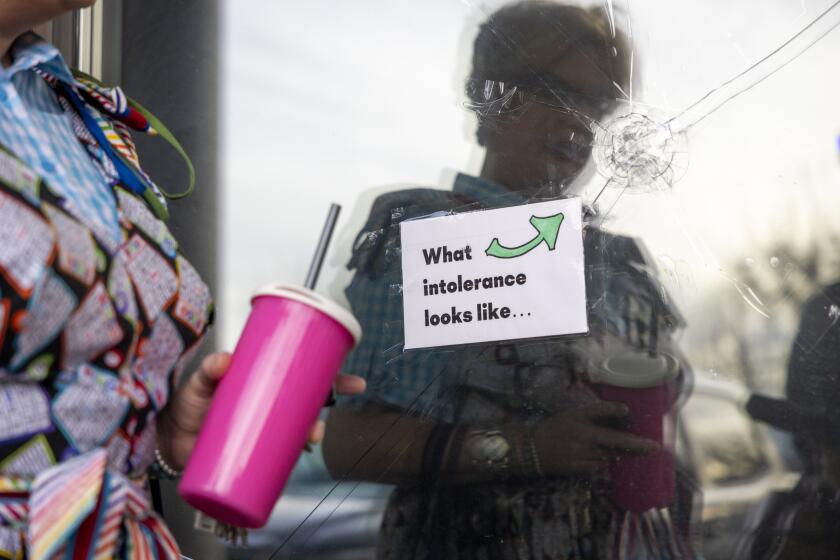U.N. report: Uranium particles enriched to 83.7% found in Iran

- Share via
VIENNA — Inspectors from the United Nations nuclear watchdog agency found uranium particles enriched up to 83.7% in Iran’s underground Fordo nuclear site, according to a report seen Tuesday by the Associated Press.
The confidential quarterly report by the Vienna-based International Atomic Energy Agency distributed to member states is likely to further raise tensions between Iran and the West over the nation’s program. Tehran already faces internal unrest after months of protests, in addition to Western anger over its sending bomb-carrying drones to Russia for its war in Ukraine.
The IAEA report mentions only “particles,” suggesting that Iran isn’t building a stockpile of uranium enriched above 60% — the level at which it has been conducting enrichment for some time.
The report describes inspectors discovering on Jan. 21 that two cascades of IR-6 centrifuges at Iran’s Fordo facility were configured in a way that is “substantially different” from what had been previously declared. The IAEA took samples the following day, which showed particles up to 83.7% purity, the report says.
“Iran informed the agency that ‘unintended fluctuations’ in enrichment levels may have occurred during the transition period,” the IAEA report says. “Discussions between the agency and Iran to clarify the matter are ongoing.”
Iran’s mission to the United Nations did not immediately respond to questions regarding the report, details of which had been circulating for about a week. The report says the IAEA would “further increase the frequency and intensity of agency verification activities” at Fordo after the discovery.
One of former President Carter’s biggest hopes is wiping out an infectious parasitic disease that’s plagued humans for millennia. How close is he?
A spokesman for Iran’s civilian nuclear program, Behrouz Kamalvandi, sought last week to portray any detection of uranium particles enriched to that level as a momentary side effect of trying to reach a finished product of 60% purity. However, experts say such a great variance in the purity even at the atomic level would appear suspicious to inspectors.
Iran’s 2015 nuclear deal limited Tehran’s uranium stockpile to 661 pounds and enrichment to 3.67% — enough to fuel a nuclear power plant. The United States’ unilateral withdraw from the accord in 2018 set in motion a series of criticisms and escalations by Tehran over its program.
Iran has been producing uranium enriched to 60% purity — a level for which nonproliferation experts already say Tehran has no civilian use. The IAEA report estimates Iran’s uranium stockpile as of Feb. 12 at 8,289 pounds — an increase of 192 pounds since its last quarterly report in November. Of that, 192 pounds is enriched up to 60% purity.
Uranium at nearly 84% is almost at weapons-grade levels of 90% — meaning any stockpile of that material could be quickly used to produce an atomic bomb if Iran chooses.
While the IAEA’s director-general has warned that Iran now has enough uranium to produce “several” nuclear bombs if it chooses, it probably would take months more to build a weapon and potentially miniaturize it to fit on a missile. The U.S. intelligence community, as recently as last weekend, has maintained its assessment that Iran isn’t pursuing an atomic bomb.
“To the best of our knowledge, we don’t believe that the supreme leader in Iran has yet made a decision to resume the weaponization program that we judge they suspended or stopped at the end of 2003,” CIA Director Williams Burns told CBS’ “Face the Nation” program. “But the other two legs of the stool, meaning enrichment programs, they’ve obviously advanced very far.”
Drag queens are more mainstream than ever, as are LGBTQ rights. Yet, story hours, where drag queens read to kids, have become a point of controversy and even violence.
But Fordo, which sits under a mountain near the holy Shiite city of Qom, about 80 miles southwest of Tehran, remains a special concern for the international community. It is about the size of a football field, large enough to house 3,000 centrifuges, but small and fortified enough to lead U.S. officials to suspect it had a military purpose when they exposed the site in 2009.
Any explanation from Iran, however, probably won’t be enough to satisfy Israel, Iran’s regional archrival. Already, Israel’s recently reinstalled Prime Minister Benjamin Netanyahu has threatened military actions against Tehran. And Israel and Iran have been engaged in a high-stakes shadow war across the wider Middle East since the nuclear deal’s collapse.
Meanwhile Tuesday, Germany’s foreign minister said both her country and Israel are worried about the allegations facing Iran over the nearly 84% enriched uranium.
“We are united by concern about the nuclear escalation on Iran’s part and about the recent reports about the very high uranium enrichment,” Annalena Baerbock said. “There is no plausible civilian justification for such a high enrichment level.”
Speaking in Berlin, Israel’s visiting foreign minister, Eli Cohen, pointed to two options to deal with Iran — using a so-called snapback mechanism in the U.N. Security Council resolution that enshrined the 2015 nuclear deal to reimpose sanctions, and “to have a credible military option on the table as well.”
“From our intelligence and from our knowledge, this is the right time to work on these two specific steps,” he said.
Associated Press writers Jon Gambrell in Dubai and Geir Moulson in Berlin contributed to this report.
More to Read
Sign up for Essential California
The most important California stories and recommendations in your inbox every morning.
You may occasionally receive promotional content from the Los Angeles Times.















